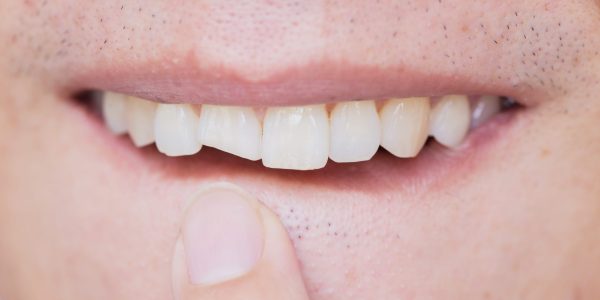What Is Composite Bonding? Why Should You Consider It for Your Dental Needs?
Composite bonding, also known as dental bonding is a cosmetic dental procedure designed to enhance the appearance of teeth by improving their colour, shape, size, or alignment. Composite bonding is a quick and affordable solution for many dental issues and can produce impressive results. Keep reading this blog to learn more about composite bonding and whether or not it is the right choice for you!

What Is Composite Bonding?
Composite bonding is a cosmetic dental procedure that is used to correct a variety of dental problems, including chipped, cracked, or discoloured teeth, gaps between teeth, and misshapen teeth. The procedure involves the application of a tooth-coloured composite resin material to the surface of the tooth. The composite resin is carefully sculpted to match the shape and size of the tooth and then cured using a special light that hardens the material. Once the bonding material is set, it is polished to a smooth and natural-looking finish.
Common Reasons For Composite Bonding
Composite bonding is commonly used to address a variety of cosmetic dental issues, such as:
- Discoloured Teeth
- Chipped Or Cracked Teeth
- Gaps Between Teeth
- Misshapen Teeth
- Small cavities

It is also a popular option for those looking to improve the overall appearance of their smile.

Pros And Cons Of Having Composite Bonding Treatment
PROS:
Aesthetic improvement
Composite bonding can improve the appearance of your teeth by fixing imperfections such as chips, cracks, gaps, and discolouration.
Minimal tooth reduction: Unlike other dental procedures, composite bonding requires minimal removal of tooth enamel, which means your natural teeth remain largely intact.
Quick and painless
Composite bonding is quick and painless because it offers a convenient and comfortable dental experience for patients. Since the procedure typically takes just one appointment and requires no anaesthesia, it is a popular option for those who want to improve the appearance of their teeth without undergoing more invasive treatments. Additionally, the lack of discomfort during the procedure can help alleviate any dental anxiety or phobia that patients may have.
Affordable
Composite bonding is generally considered to be an affordable cosmetic dental procedure. The cost of composite bonding can vary depending on the extent of the treatment needed, the location of the dental practice, and other factors. However, compared to other cosmetic dental procedures like veneers or crowns, composite bonding is usually less expensive. If you want to know our prices at Oldbury Smile Spa, get in touch with us today.
CONS:
Durability
Composite bonding is not as strong as other dental materials such as porcelain or metal, and may need to be replaced after a few years. If the bonding process is not done properly, the bond between the tooth and the composite material may not be strong enough, leading to the material becoming dislodged or chipped.
Staining
Composite resin can stain over time, particularly if you consume a lot of coffee, tea, red wine, or tobacco products.
Repairs
If the bonding becomes damaged or falls off, it can be difficult to repair or replace without removing the entire bonding material and starting over.
Limited use
Composite bonding is not suitable for all dental issues, and may not be recommended for certain situations such as large cavities or significant damage to the tooth.
Composite Bonding VS. Other Cosmetic Dental Procedures
Composite bonding is just one of several cosmetic dental procedures that can help patients achieve a more beautiful and confident smile. Here are some of the key differences between composite bonding and other popular cosmetic dental procedures:
- Veneers: Veneers are thin shells of porcelain or composite resin that are bonded to the front of the teeth to improve their appearance. Veneers can be used to address many of the same cosmetic dental issues as composite bonding, including discoloured teeth, chipped or cracked teeth, gaps between teeth, and misshapen teeth. However, veneers may require more tooth preparation and be more expensive than composite bonding.

- Crowns: Crowns are tooth-shaped caps that are placed over the entire tooth to restore its function and appearance. Crowns are typically used to address more severe dental issues, such as a large cavity or a broken tooth. Crowns may be more durable than composite bonding but require more tooth preparation and can be more expensive.
- Teeth Whitening: Teeth whitening is a non-invasive cosmetic dental procedure that can improve the appearance of discoloured teeth. Teeth whitening can be done in-office or at home using custom trays and a whitening solution. Unlike composite bonding, teeth whitening does not address structural or shape issues with the teeth.
- Orthodontic Treatment: Orthodontic treatment, such as braces or clear aligners, can be used to correct misaligned teeth, bite issues, and crowded teeth. While composite bonding can improve the appearance of misshapen or crooked teeth, it cannot correct the underlying structural issues that require orthodontic treatment.











